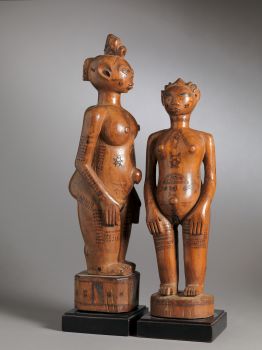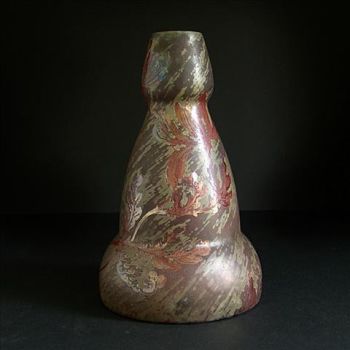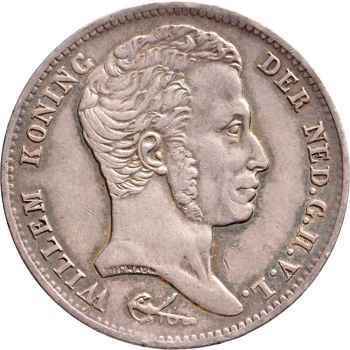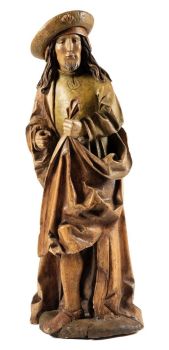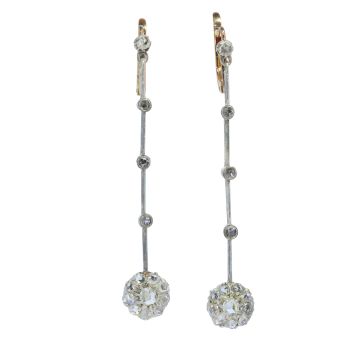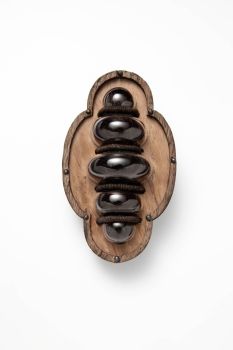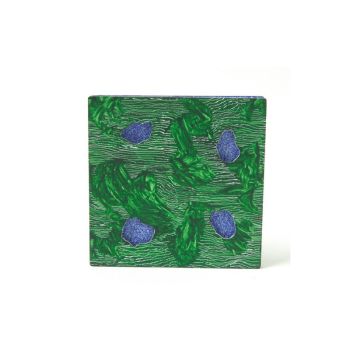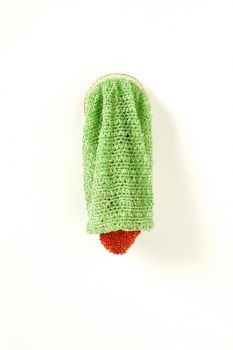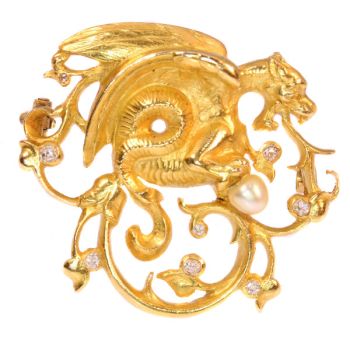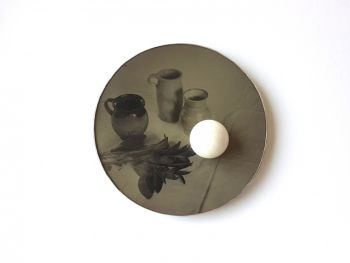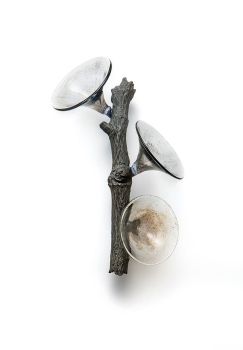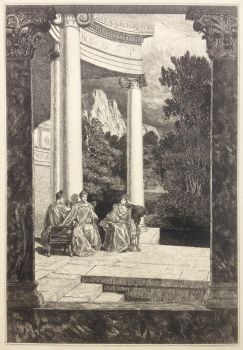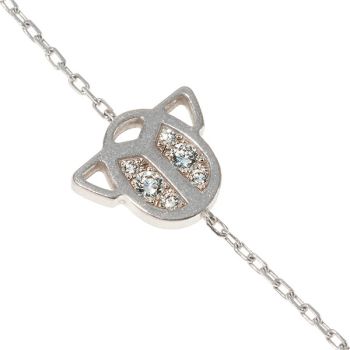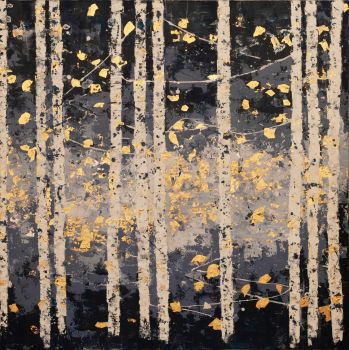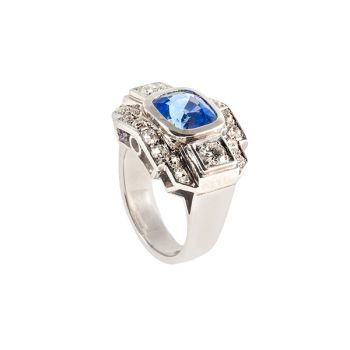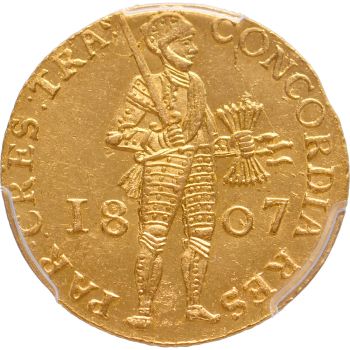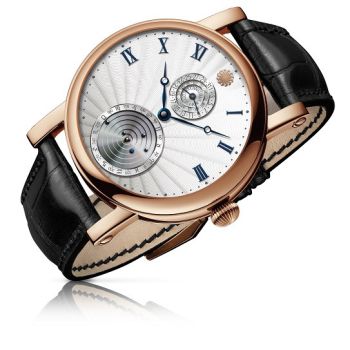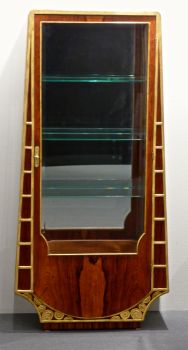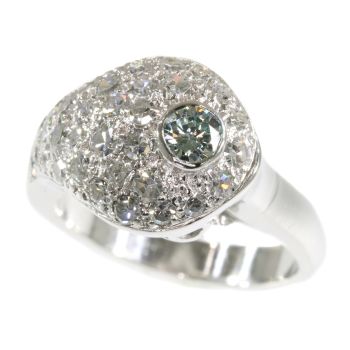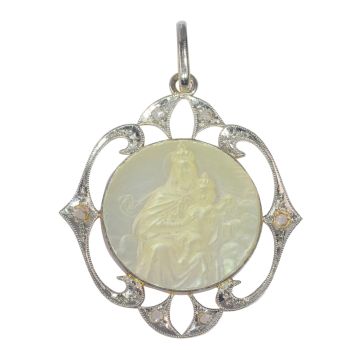Moeda romana de prata antiga montada em um broche vitoriano antigo 1870
Artista Desconocido
Oro
€ 2.750
Adin Fine Antique Jewellery
- Sobre la obra de arte
This brooch is a typical example of coin jewelry as made by Lucien Falize in circa 1890 (for examples see English translation of Vever on page 954 and further). The 18K gold mounting holds an ancient coin. As other jewelsby Falize it reveals an impeccable taste, despite the deliberate use of Classical sources and the beautiful works of the Renaissance in particular, which Falize knew and cherished above all others.
The coin itself has been recognized as an original ancient coin from 54 B.C.!
Antique jewelry object group: brooch
Condition: excellent condition
- (more info on our condition scale)
Country of origin:Although it does not carry any legible control marks we believe this to be of French origin.
Style: Victorian - Victorian decorative arts refers to the style of decorative arts during the Victorian era. The Victorian era is known for its eclectic revival and interpretation of historic styles and the introduction of cross-cultural influences from themiddle east and Asia in furniture, fittings, and Interior decoration. Victorian design is widely viewed as having indulged in a regrettable excess of ornament. The Arts and Crafts movement, the aesthetic movement, Anglo-Japanese style, and Art Nouveaustyle have their beginnings in the late Victorian era.
- See also: Victorianor more info on styles
Style specifics: The Grand Victorian Period - Experts divide the reign of Queen Victoria, also called The Victorian era (1837 - 1901) into three periods of about twenty years each; The Romantic Victorian Period (1837 - 1860), The Grand Victorian Period (1860 - 1880),and the Late or Aesthetic Victorian Period (1880 - 1901).
We consider this to be of the Grand Victorian Period.
This second Victorian period is famous for its ostentatious pieces set with pearls and diamonds (from South Africa). From ca. 1850 wealthy English had reported about jewelry from India and Japan, which heavily inspired the jewelers of this period. Thisperiod also corresponds with the death of Queen Victoria's husband King Albert making mourning jewelry (set with heavy dark stones) the type of jewelry specific for this period.
Period: ca. 1870
- (events and facts in 1870)
Description of coin: The coin represents the laurelled head of Santé (Salvtis). The back of the pendant showsSanté leaning on a pillar and holding in the right hand a snake (Nv. Acilivs III Vir. Valetv.).
Remarks on the coin master: The coin, a new monetary unit, with Manius as first name, proofs that he doesn't carryout his duty before approx. 700 (54 B.C.). In this era many historians were called Manius. One of them was Manius Acilius Glabrio. He was the son of a very important person, he battled under the command of Julius Cesar during the Civil war, hebecame many times governor.
Material: 18k yellow gold and silver.
- (more info on precious metals)
Hallmarks: No trace.
- (more info on hallmarks)
Dimensions: 4.70 cm (1.85 inch) by 2.70 cm (1.06 inch)
Weight: 12.00 gram (7.72 dwt)
Reference Nº: 01198-2660
Copyright photography: Adin, fine antique jewelry
- Sobre el artista
Puede suceder que un artista o creador sea desconocido.
Algunas obras no deben determinarse por quién está hecho o por (un grupo de) artesanos. Algunos ejemplos son estatuas de la Antigüedad, muebles, espejos o firmas que no son claras o legibles, pero también algunas obras no están firmadas en absoluto.
También puedes encontrar la siguiente descripción:
•"Atribuido a …." En su opinión, probablemente una obra del artista, al menos en parte.
•“Estudio de….” o “Taller de” En su opinión, una obra ejecutada en el estudio o taller del artista, posiblemente bajo su supervisión
•“Círculo de…” En su opinión, una obra del período del artista que muestra su influencia, estrechamente asociado con el artista pero no necesariamente su alumno.
•"Estilo de …." o “Seguidor de…”. En su opinión, una obra ejecutada al estilo del artista pero no necesariamente por un alumno; puede ser contemporáneo o casi contemporáneo
•"Manera de …." En su opinión una obra al estilo del artista pero de fecha posterior
•"Después …." En su opinión, una copia (de cualquier fecha) de una obra del artista
•“Firmado…”, “Fechado…” o “Inscrito” En su opinión, la obra ha sido firmada/fechada/inscrita por el artista. La adición de un signo de interrogación indica un elemento de duda.
•“Con firma…”, “Con fecha…”, “Con inscripción…” o “Lleva firma/fecha/inscripción” en su opinión la firma/fecha/inscripción ha sido añadida por alguien que no es el artista
¿Está interesado en comprar esta obra de arte?
Artwork details
Related artworks
Artista Desconocido
Couple Wooden Ancestors Sculptures with Scarifications, Zela People, DRC. 1920 - 1930
Precio a consultarSpectandum Gallery
1 - 4 / 12- 1 - 4 / 24
Artista Desconocido
Enchanting 1870s Vintage Fly Brooch: Victorian Elegance in Gold1870
€ 4.600Adin Fine Antique Jewellery
 curada por
curada porDanny Bree
1 - 4 / 24Artista Desconocido
Pulseira de diamante do século 18 com entalhes de 2.000 anos1790
€ 23.000Adin Fine Antique Jewellery
 curada por
curada porDanny Bree
Max Klinger
Psyche und ihre Schwestern/Psyche and her sisters1880
Precio a consultarHans den Hollander Prints
Jean-François Rauzier
Chapelle Royale - Limited edition of 8 2010
Precio a consultarVilla del Arte Galleries
1 - 4 / 20Artista Desconocido
Anillo retro en platino engastado con diamantes y zafiro1940 - 1950
Precio a consultarLyppens Juweliers
Christiaan van der Kaauw
PR CVDK CKPT1124 Rose Planetarium Horloge 2023
Precio a consultarHa-Juweliers
1 - 4 / 24- 1 - 4 / 12










